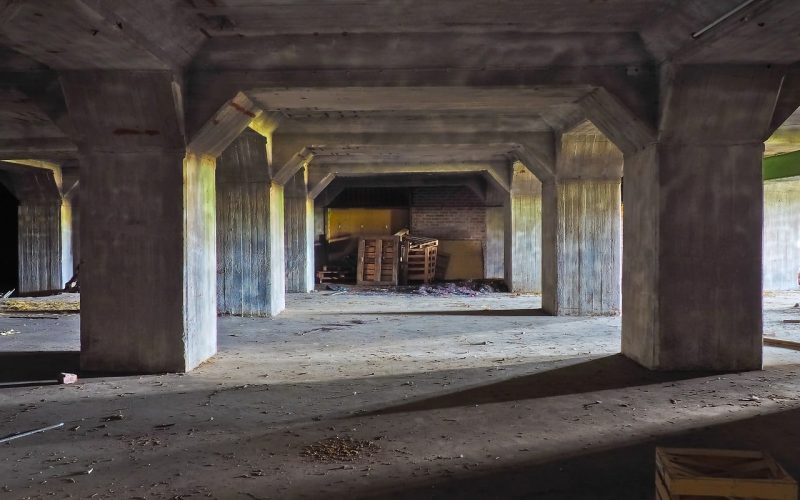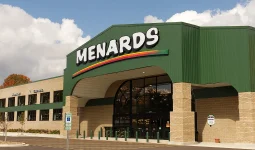If you’re renovating your basement, you might consider drywall alternatives for the basement as one of your materials options.
If so, you’re not alone – drywall is one of the market’s most popular basement finishing materials today.
Moreover, it’s easy to work with, affordable, and widely available from dozens of home improvement stores and hardware suppliers.
It can be purchased in large sheets or pre-cut pieces. However, it isn’t necessarily the best option for every basement design project.
1. Poured Concrete Walls
Poured concrete walls are great drywall alternatives for the basement. They’re durable, easy to clean, and can provide a variety of looks.
Plus, poured concrete walls can help insulate your home and maintain moisture.
However, here are a few things to remember if you’re considering pouring concrete walls for your basement.
First, they can’t be easily painted or textured like drywall. It’s important to build them with steel reinforcement rods embedded every two feet apart to ensure no crack under pressure.
Nevertheless, when installing the walls, they should be kept at least two inches from other surfaces, such as plumbing pipes and wiring; any closer will make it difficult to install doors and windows.
Therefore, you’ll need someone with experience installing the walls. This is because it’s an advanced project requiring specific skills and knowledge that most people cannot access.
While the concrete needs no sealing when applied, once you’ve sealed it, you cannot go back. After installation is complete, the surface should be textured with a joint compound.
Once they are set up, pouring concrete walls requires little maintenance.
To give them a more natural look and feel, they should be sealed with paint or waterproofing sealant.
With these limitations in mind, poured concrete walls might not be right for your basement. Speak to an expert about whether this would work for you!
2. Insulating Cement Boards
If you want drywall alternatives for your basement that will add some extra insulation, try using cement boards.
Cement boards are made of Portland cement and aggregate. They’re often used as tile backing boards or exterior sheathing material.
However, when used in the basement, they can keep the space warm in the winter and cool in the summer. They’re fire-resistant and won’t rot or attract pests like termites.
3. Lath And Plaster
Lath and plaster have been traditional building materials for centuries.
They are made from wood laths (strips of wood) that are nailed or stapled to the studs in your walls and then covered with plaster.
However, plaster can be applied by hand or machine and be textured or smooth. Hand-applied plaster finishes are usually thicker than those done by machine.
One disadvantage is that this type of finish can take weeks to dry before the next layer can be applied.
Another disadvantage is that plaster takes more time and skill than drywall. However, many people find it worth the extra effort because they love its aesthetic appeal.
4. Fiberglass Insulation
Fiberglass insulation is one of the most popular drywall alternatives for basements. It’s made from glass fibers spun into a mat and bonded with a resin.
Fiberglass is a great insulator, helping to keep your basement warm in the winter and cool in the summer.
Therefore, it’s also fire-resistant and doesn’t absorb moisture, so it’s ideal for basement walls.
One downside is that fiberglass isn’t as structurally sound as drywall, but you can use it on ceilings without worry.
The pros of fiberglass insulators are that they are highly efficient, have fire resistance, and have no water absorption.
The cons of fiberglass insulation are that it is not structurally sound and cannot be used on floors or ceilings.
5. Rigid Foam Panels
Rigid foam panels are great basement drywall alternatives. They’re easy to install, provide good insulation, and are fire-resistant.
Plus, they won’t absorb water, so you don’t have to worry about mold or mildew.
However, Thermoplastic boards are another type of panel that can be an alternative to drywall in your basement.
They’re typically made from polystyrene beads and then laminated with polyvinyl chloride (PVC).
First, use construction adhesive on the concrete wall where the boards will go to install them.
Then, staple or nail them into place over the adhesive. You’ll need to use screws on any studs to secure them properly.
Use a utility knife to cut around electrical outlets and pipes before installing them.
6. Waterproof Wallpaper
Waterproof wallpapers are great drywall alternatives for basements.
They’re easy to install, come in various colors and patterns, and are waterproof, making them ideal for damp or humid environments.
Plus, it’s inexpensive to finish your basement walls without worrying about mold or mildew growth.
To install, simply apply adhesive to the back of the wallpaper and hang it on your wall like you would any other type of wallpaper.
However, start at the top of the wall and work your way down, smoothing out any bubbles.
Once all the walls are covered, use a seam sealer to seal any seams or gaps between pieces of wallpaper.
If you’re looking for a waterproof option for your basement, wallpaper is a great choice.
Waterproof wallpaper is available in various colors and patterns, so you can find an option that fits your style.
Plus, it’s easy to install and can be removed if necessary. Here are ten waterproof wallpaper options for your basement:
- Bison America – Sporty design with high-performance fabric.
- Siser has a large selection of prints.
- Duck Brand has a variety of animal prints.
- Fashion Union – Bold designs.
- Aqua Decor – Pretty floral pattern
- US Fabrics – Perfect wall art idea
- Rainbow Group – Customizable
- Designers Guild – Beautiful traditional look.
- Nuova Fabbrica De Pelle – Modern artistry meets old-world craftsmanship
- Kaufman Canvas – Create your design.
Ben Webster, owner of Wallpaper Warehouse, says wallpaper has been used as a waterproofing solution since the 1800s.
However, it may not be as durable as drywall, but it certainly does the job.
These waterproof wallpaper ideas will help keep water out of your basement and provide added beauty simultaneously!
7. Lightweight Concrete Paneling
If you want lightweight and durable drywall alternatives for your basement, concrete paneling may be the perfect option.
Concrete paneling is easy to install and can be painted or stained to match your décor.
Plus, it’s resistant to mold and mildew, making it a great choice for wetter basements.
However, the pros of lightweight concrete paneling: Lightweight, durable, Easy installation, Can be painted or stained to match décor.
Lightweight concrete paneling is resistant to mold and mildew and is perfect for wetter basements.
The cons of lightweight concrete paneling are that heavy machinery is required during installation and that it may need professional installation.
8. Stone Veneer Paneling
Stone veneer paneling is one of the great drywall alternatives for basements. It is easy to install, looks great, and is durable and will last a long time.
Moreover, stone veneer paneling is also fire-resistant. So, it is a great option if you are worried about fires in your basement.
Therefore, it is also waterproof, making it a good option if you live in an area with heavy rain or snow.
Stone veneer paneling is also environmentally friendly because it is made from natural materials and recyclable, so you can feel good about using it in your home.
9. Plastic Panels
Consider plastic panels if you want durable and waterproof drywall alternatives for the basement.
These panels are easy to install and can be cut to fit any space.
Plus, they’re resistant to mold and mildew, making them a great option for damp basements.
However, here are ten plastic paneling options to consider for your basement.
First, affordable Plastic Panels: Use this for a budget-friendly project. Standard Polycarbonate: The polycarbonate is UV stabilized and won’t yellow over time like other plastics.
Furthermore, 3M Corrugated Plastic Panels are scratch-resistant, weatherproof, and rodent-proof.
They also make noise when somebody walks on them, which can deter trespassers from entering your home through the basement!
Also, General-Purpose Polyethylene is easily repairable in case of damage or wear with the addition of new pieces of plastic sheeting or new covering film on top of the existing surface.
And Doorstep Repair Kit: Use our Doorstep Repair Kit to fix minor damage without removing the entire door threshold. Our kit includes a sealant that dries clear and does not leave an unsightly mess behind!
Therefore, it’s easy to use: just clean the area, apply sealant, and let it dry. Then, peel off the protective layer before applying the new material. One pack is enough for one threshold size: 2-1/2 x 5-1/2.
10. Plywood
If you’re looking for cheaper drywall alternatives for the basement, plywood is a good option.
It’s also easy to work with and install, which makes it a popular choice for do-it-yourselfers.
However, plywood does have some drawbacks. It’s not as durable as drywall and doesn’t provide the same level of soundproofing. But if you’re on a budget, plywood is a decent option.
11. Pegboard
Pegboard is a versatile material used for various applications, including as a drywall alternative. It is easy to install and can be cut to fit any space.
However, Pegboard is durable and can be painted or stained to match your décor.
It is available in various colors and styles to find the perfect look for your basement.
Pegboard is an excellent drywall alternative because it is cost-effective and easy to work with.
Pegboard is a good option if you want drywall alternatives for the basement that will give you a unique look.
Conclusion
Although drywall is the most popular material for finishing a basement, it’s not the only option.
If you want something different, there are a variety of drywall alternatives available.
However, from wood paneling to paintable wallpaper, there’s an option to suit your needs and personal style.
So, look at the 11 drywall alternatives for the basement above and see which one is right for you.








